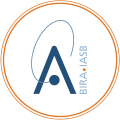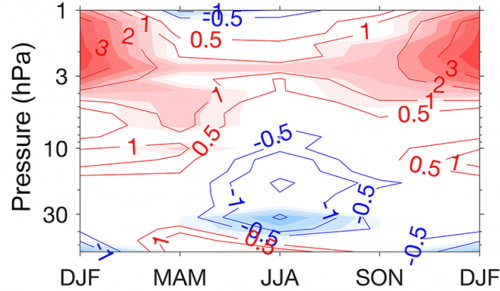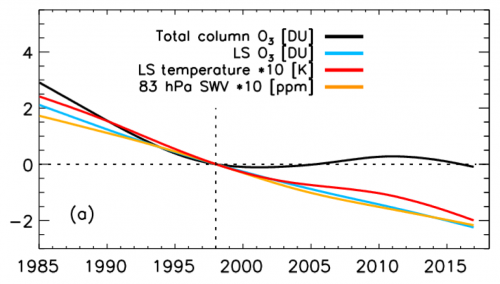Scientific Assessments of Ozone Depletion
The ozone layer located in the stratosphere shields humans and the biosphere against solar ultraviolet radiation that increases the risks of skin cancer, cataract, and suppression of the immune system.
The unpleasant discoveries in the early 1980s of a hole in the ozone layer over Antarctica every springtime, and of its rapid thinning over the rest of the globe, urged policy makers to sign the Vienna Convention in 1985 and the Montreal Protocol in 1987, thereby banning the production and emission of ozone depleting chlorofluorocarbons. The research community was assigned to asses on a four-year cycle:
- the state of the ozone layer
- the substances related to its depletion
- climate change effects on the ozone layer.
These assessments are coordinated by the World Meteorological Organization (WMO) and the United Nations Environment Programme (UNEP).
LOTUS: Monitoring long-term changes in stratospheric ozone
Researchers at BIRA-IASB initiated an international research activity focused on Long-term Ozone Trends and Uncertainties in the Stratosphere (LOTUS). In 2018, LOTUS established a community-wide consensus that ozone levels have been increasing since 2000 in the upper stratosphere at middle Northern latitudes, demonstrating the effectiveness of the Montreal Protocol.
Since then, longer and improved ozone data records were released and novel analysis techniques emerged, enhancing the scope of the LOTUS assessments.
Trend assessments at finer resolution
LOTUS researchers have successfully increased the spatial and temporal resolution of ozone profile Climate Data Records while maintaining their long-term stability. This advance has led to first studies of the spatial structure and seasonal dependence of stratospheric ozone trends. Distinguishing the roles of dynamics and (photo)chemistry in long-term changes of stratospheric ozone levels remains a topic of research.
Emerging techniques
BIRA-IASB leads an international team dedicated to pioneering the use of data science methods to combine atmospheric observations and their uncertainty in an optimal and coherent way. A prototype is currently being developed which merges ozone data measured by balloon-borne ozonesondes and by different limb-viewing and solar occultation satellites.
The ambition for this novel data record is to better quantify ozone changes in the lower stratosphere, an issue which has been the subject of much debate in the community in recent years. Doing so would also catalyse the application of these new techniques in other research domains.
References
- Ball, W. T., Chiodo, G., Abalos, M., Alsing, J., and Stenke, A.: Inconsistencies between chemistry–climate models and observed lower stratospheric ozone trends since 1998, Atmos. Chem. Phys., 20, 9737–9752, https://doi.org/10.5194/acp-20-9737-2020, 2020.
- Sofieva, V. F., Szelag, M., Tamminen, J., Kyrölä, E., Degenstein, D., Roth, C., Zawada, D., Rozanov, A., Arosio, C., Burrows, J. P., Weber, M., Laeng, A., Stiller, G., von Clarmann, T., Froidevaux, L., Livesey, N., van Roozendael, M., and Retscher, C.: Measurement report: Regional trends of stratospheric ozone evaluated using the MErged GRIdded Dataset of Ozone Profiles (MEGRIDOP), Atmos. Chem. Phys. Discuss. [preprint], https://doi.org/10.5194/acp-2020-1117, in review, 2020.
- Szeląg, M. E., Sofieva, V. F., Degenstein, D., Roth, C., Davis, S., and Froidevaux, L.: Seasonal stratospheric ozone trends over 2000–2018 derived from several merged data sets, Atmos. Chem. Phys., 20, 7035–7047, https://doi.org/10.5194/acp-20-7035-2020, 2020.


